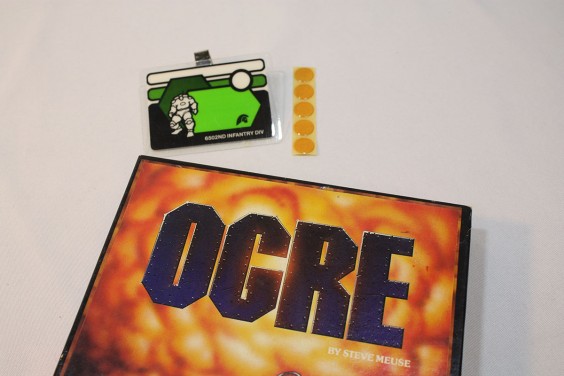Share the Dream
Written by Judith // January 31, 2015 // At the Museum, Newsletters // No comments
Share the Dream
I always hated fundraising. It was the class I least wanted to take in Museum Studies school. But a wise fundraiser told me, “Fundraising isn’t about asking people for money. It’s offering them a way to share a dream.” So this year will be the Digital Game Museum’s Share the Dream year!
We are setting a goal of raising an additional $15,000 this year (and every year to come) in pledges, either as lump sums or as recurring monthly donations. If you’ve visited DGM, you know that we ran out of room a while ago – right now, the shelves are jam packed. There are boxes of artifacts on every table and on the floor. We are having trouble accommodating more than a few visitors at a time, and our work party days have us squeezed in like sardines, trying to catch up on database entries. We need more space for exhibits and playable games.
Share the Dream with us of a bigger museum with better exhibits and more playable games on site. Sign up for a monthly sponsorship of any amount, come and volunteer, sponsor us as a Day of Service site through your workplace. You can help us reach our $15,000 goal. Some people take advantage of their companies’ matching programs to double their gifts, plus some companies send us money for every hour an employee of theirs volunteers with us, including corporate service days. Tell your friends through Twitter, Facebook, Tumblr and more. As we build up our volunteer base and our income, we can have more game tournaments and events like Atari Party. Join us and Share the Dream!
Judith Haemmerle, Executive Director
Mainframes for Games and Back Again
Remember when mainframe computers were used to play games like Space War! and Adventure? Well, now you can reverse that and build a supercomputer from your game consoles. If you and your friends have a few spare PlayStation 3s hanging around that you don’t want to donate to us, you can build your own supercomputer! That’s what Dr. Gaurav Khanna at the University of Massachusetts did. He put 16 of them together in a refrigerated shipping container and is using them to study gravitational waves. PS3s are ideal, because they’re low cost – compared to a supercomputer – and allow you to install the operating system of your choice, something you can’t do with the PS4.
Dr. Khanna’s setup is tiny compared to the Air Force Research Lab’s 2010 “Condor Cluster” built for radar image processing, pattern recognition, satellite imagery processing, and artificial intelligence research. It used a whopping 1,716 PS3s. When it was built, it was the 35th fastest supercomputer in the world, able to do 500 trillion floating point operations per second, but its cost of $2 million was less than one-tenth the cost of a comparable computer built using more conventional components. And, as a bonus, it’s energy efficient at 1.5 GigaFLOPS per watt of computing power.
In fact, PS3s are so popular for research that there’s a Wikipedia article devoted to the history of PlayStation 3 clusters.
But you know how fast gaming hardware becomes obsolete – Dr. Khanna is planning his next supercomputer to be made entirely of PC graphics cards to overcome the memory limitations of the PS3s.
Museums and Libraries – what’s the difference?
This month the folks over at the Internet Archive opened up access to over 6400 classic DOS games for download and play online. This is exciting news on a lot of fronts, but it also presents a great opportunity to expand on the conversation we started in the August newsletter to speak a bit more about the differences between what we do here at the Digital Games Museum and the preservation work done by groups like the Internet Archive.
A lot of people are surprised when they visit the museum and we don’t have a lot of playable games. This is because our focus is on preservation of artifacts and culture over maintaining playable versions of games through emulation or access to original hardware. In order to reduce the wear on our original versions of game consoles, cartridges, and controllers we draw a distinction between artifacts in our collection and materials we provide for public use. When we receive copies of games, consoles, or promotional materials we judge them against any existing copies we own and try to make sure that the most original version is stored in archival conditions. Depending on rarity or condition we may put these artifacts on display, but generally we would prefer to keep them literally in the dark to prevent light damage from ultraviolet rays. Other artifacts might be suitable for display, or if we have enough copies of a common game or console (or if a game demonstrates a specific revolution in game mechanics) we would then look at making them playable.
A good way to think of the distinction is to compare what we do as a museum to how a library operates. Stanford has a fantastic library and actually has a great collection of games that can be taken out for play on systems they maintain. But just as with books, libraries are more concerned with the information in the medium rather than the medium itself. This is why you’ll find microfiche machines instead of stacks and stacks of newspapers if you go to look up old articles from a local paper. It’s rare to see first editions of a book in libraries and many times library books will have been rebound or repaired or digitized entirely. This works wonderfully to preserve the content but also creates distance between the creator and consumer. In the game world, apps like Super Retro 16 (one of our Leader Sponsors!) enable you to play old games on new hardware by recreating the circuits and logic of the original hardware. This is a fantastic way to play classic games on your phone or PC, but the transition from hardware to software is notoriously difficult when it comes to maintaining fidelity. Some emulators recreate the scan-lines of old televisions while others slow down the software processors to induce authentic lag. A recent remake of the arcade classic Afterburner even includes accurate mechanical button press sounds. At the Digital Game Museum we love that so many people are working to maintain classic games for play because it makes our mission that much clearer. We preserve the artifacts not just out of a sense of nostalgia, but to ground the play experiences of today with a sense of tactile history. We believe that seeing the evolution of controllers from the Fairchild to the Novint Falcon or looking at the texture of a cloth map is just as important to the gaming experience as playing the games themselves.
So when groups like the Internet Archive make classic games available for people to play and experience it helps to show why digital games have become such an important part of popular culture and why it is important that we preserve all aspects of them for future generations to appreciate and study. You can play great games like OGRE at the Internet Archive and visit us to see the real radiation detection badges that were included with the game when it was originally sold!
– Dave Beaudoin, DGM Board of Trustees
Brian, DGM Photographer
Whenever we need something special or challenging photographed – like faded Post-Its, a decomposing “rock,” or the inflatable bat’leth he did last week – we call on Brian and his photography skills. You may have seen him directing the filming of Al Alcorn’s talk at the Sunnyvale Library Atari Party last year or seen his photo skills on busses on the El Camino route, advertising HobbyTown. Brian is an avid yo-yoer (watch for him at the Yolex competition in Roseville), a competition Team Fortress player, publishes tutorials on Tom’s Hardware Forum (Thermal Paste Removal Guide, Intel Stock Cooler Installation Guide), and races radio controlled vehicles. He even tutors Judith on team building strategies in Puzzle and Dragons! It’s hard to believe that he does all this while a Junior at a Sunnyvale High School taking four AP classes. Brian just got his driver’s license, and while we don’t expect to see him in his dream car (Subaru WRX STI) any time soon, we hope his increased mobility will bring him to DGM even more often. Well, as soon as those college applications get done – and the SATs. We just wonder – when does he sleep?
Thanks, Brian!
This Month’s Trivia Questions
This popular car racing series is exclusive to PlayStation and helped launch PlayStation back in the days. The series later held numerous Guinness World Records including the record for “Largest Instruction Guide for a Racing Game”. What is it called, and when was it released?
Last Month’s Trivia Answers
What was the first game to use a dual stick control system, and who designed it?
Robotron 2084: Eugene Jarvis for Vid Kidz, distributed by Williams Electronics (part of WMS Industries)




